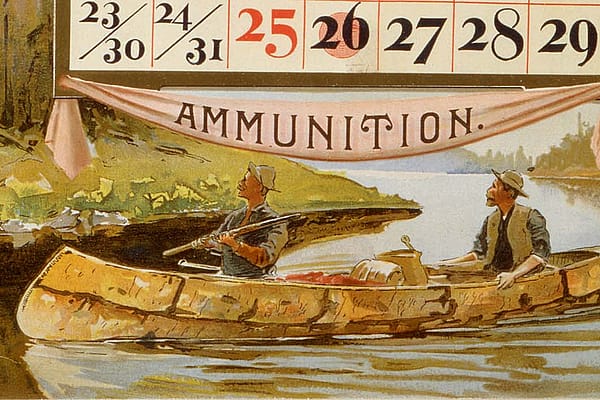
Treasures from Our West: Albert Bierstadt’s “A Bull Buffalo”
Originally featured in Points West magazine in Summer 2018
Albert Bierstadt’s “A Bull Buffalo”
Albert Bierstadt is best known for his landscape paintings, but he was also a skilled painter of animals. Following his first trip west in 1859, Bierstadt began featuring western wildlife prominently in his art. He portrayed pronghorn antelope, elk, mountain goats, and even prairie dogs, but he was especially enamored of the plains bison, the largest land mammal in North America. Bierstadt celebrated bison (buffalo) as our nation’s most emblematic animal and strove to inspire empathy for remnant herds in the West.
During the artist’s lifetime, bison populations dwindled to the hundreds where once the species roamed in great herds. Hunters killed bison in excess, and mass settlement and development of the region diminished their habitats. Bierstadt used art to decry the near-extermination of the animal in works like his final masterpiece, The Last of the Buffalo (ca. 1888).
A Bull Buffalo is a sensitively rendered portrait revealing Bierstadt’s keen and enduring interest in bison. The painting was included in the special exhibition, Albert Bierstadt: Witness to a Changing West, which was on view at the Buffalo Bill Center of the West June 8–September 30, 2018. Co-produced with Gilcrease Museum, Tulsa, Oklahoma, the exhibition provides new perspectives on Bierstadt’s contributions to debates around wildlife conservation in the West.
Albert Bierstadt (1830–1902). A Bull Buffalo, 1879. Oil on paper, 13.25 x 15.25 inches. Gift of Carman H. Messmore. 1.62
Double-click to zoom
Post 204
Written By
Nancy McClure
Nancy now does Grants & Foundations Relations for the Center of the West's Development Department, but was formerly the Content Producer for the Center's Public Relations Department, where her work included writing and updating website content, publicizing events, copy editing, working with images, and producing the e-newsletter Western Wire. Her current job is seeking and applying for funding from government grants and private foundations. In her spare time, Nancy enjoys photography, reading, flower gardening, and playing the flute.










